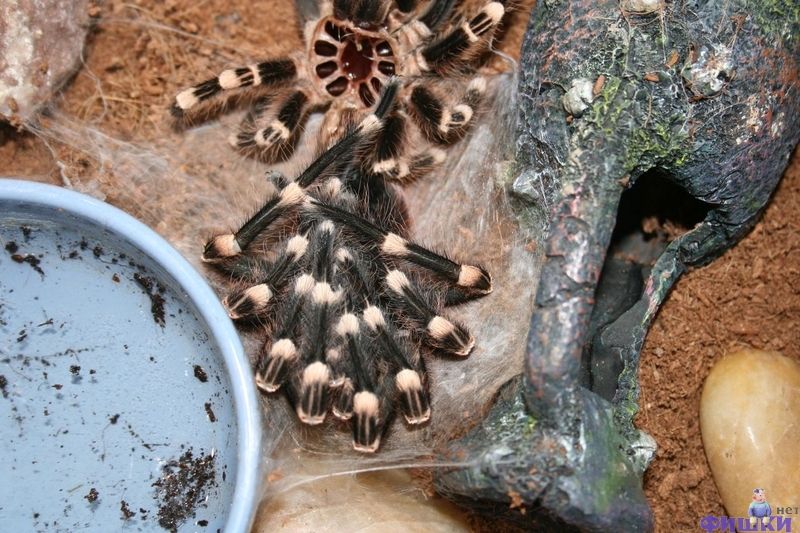|
|
Molting Spider
|
The main groups of modern spiders, Mygalomorphae and Araneomorphae, first appear in the Triassic well before 200 million years ago. Some Triassic mygalomorphs appear to be members of the family Hexathelidae, whose modern members include the notorious Sydney funnel-web spider, and their spinnerets appear adapted for building funnel-shaped webs to catch jumping insects. Araneomorphae account for the great majority of modern spiders, including those that weave the familiar orb-shaped webs. The Jurassic and Cretaceous periods provide a large number of fossil spiders, including representatives of many modern families.
Family tree
It is now agreed that spiders (Araneae) are monophyletic (i.e., members of a group of organisms which form a clade, consisting of a last common ancestor and all of its descendants). There has been debate about what their closest evolutionary relatives are, and how all of these evolved from the ancestral chelicerates, which were marine animals. The cladogram on the right is based on J.W. Shultz' analysis (2007). Other views include proposals that: scorpions are more closely related to the extinct marine scorpion-like eurypterids than to spiders; spiders and Amblypygi are a monophyletic group. The appearance of several multi-way branchings in the tree on the right shows that there are still uncertainties about relationships between the groups involved.
|
|









